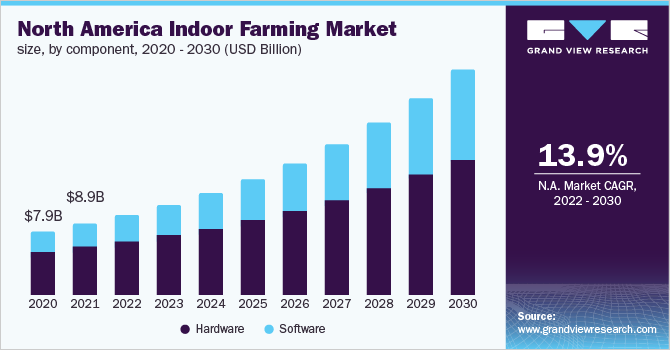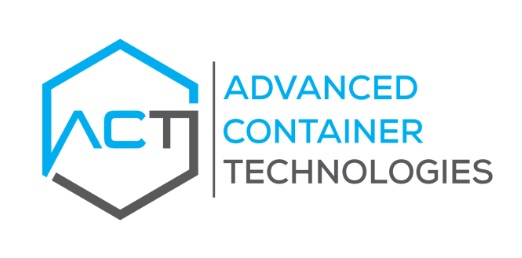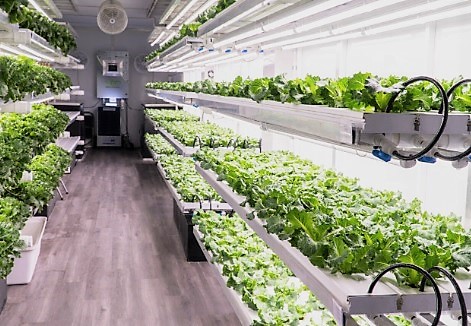IS THE $40 BILLION INDOOR FARMING MARKET THE FUTURE OF HEALTHY FOOD?
The movement towards sustainable, clean-food farming is gaining momentum as more players enter the market and more advanced soil solutions are found. According to Grand View Research the global indoor farming market was valued at $39.5 billion (€37.5bn) in 2021 and is expected to expand at a compound annual growth rate (CAGR) of 13.5% from 2022 to 2030.
In the US – a $9 billion market in 2021 – the growth is expected to be even faster at almost 14%. There, increasing consumer awareness about the advantages of consuming fresh and high-quality food is expected to be the key driver.
California-based Advanced Container Technologies (ACT) is one player that says it is working towards reshaping the future of farming by enabling traditional growers to transition to its GrowPods – essentially an indoor farming option – which ACT claims “is free from pathogens and pesticides, and is better than organic”.
Taking out pathogens using indoor farming
As SIAL has recently reported, the US Centers for Disease Control (CDC) has raised alerts about pathogenic outbreaks. In March, the body noted an E. coli outbreak linked to packaged salads. According to the CDC: “Vegetables, including leafy greens can sometimes be contaminated with harmful germs,” adding that “no washing method can remove all germs”. The warning was related to organically grown lettuce, which the CDC identified using whole genome sequencing, and it was associated with contact with livestock and contaminated water.

Organic food, like other foods, is susceptible to pathogen contamination and ACT claims that the public is largely unaware that ‘organic’ does not necessarily mean ‘clean’ food. In a statement the company said: “Our nation’s centralised food system poses concrete risks: in addition to widespread food-borne illness, interruptions caused by supply chain issues can cause spoilage, and the entire food distribution network causes significant increases in carbon production and greenhouse gases resulting from the thousands of trucks used to haul food from one corner of the nation to the other.”
Decentralised food production

For that reason it is promoting smaller footprint indoor farming food production. “It’s time to decentralise, and GrowPods have the power to do just that,” said ACT’s CEO Doug Heldoorn. The units are complete growing systems so farmers can get started as soon as they are delivered. Every farm-related task – from seeding to harvesting – is handled within the system.
There are also environmental benefits. According to CBS News, shipping container farms “can use up to 95% less water and yield 50% more produce than traditional farming” making them efficient, but also a good solution for areas impacted by drought or arid weather conditions.
GrowPods are powered by the company’s own automation software, which makes farming less labour-intensive than other growing techniques. The automation controls the environment, nutrition and hydration levels; and enables farmers to remotely monitor conditions in the farm.
ACT said: “This can simplify certain aspects of indoor farming, making it easier for inexperienced farmers, non-profit organisations, restaurants, grocery stores, or others to quickly and easily start growing healthy, nutritious food. Heldoorn added: “GrowPods automate the growing process so that farmers can now even take a vacation.”
Vertical farming is on the up
The idea of monitoring your mini-farm on your phone from a beach in the Caribbean is tempting. While that may be a dream scenario, there is movement towards smaller footprint indoor farming methods. According to The World Bank Group, overall arable land per capita has declined from 0.197 hectares in 2013 to 0.192 hectares in 2016. The scarcity – owing to land degradation – has encouraged farmers to adopt new solutions such as vertical farming techniques.

Growing crops indoors in layers stacked on racks, in a multi-story building, or a warehouse is a trend and it is anticipated that this will become more significant as a defined market by 2030.
Indoor farming helps grow the total crop yield per unit area by using the stacked layers of potted seeds using methods such as aquaponics and hydroponics and utilising artificial lighting for adequate light levels and nutrients. For now, the high initial investment in the building of indoor farms and limitations on the growing variety of crops is expected to hinder market growth, according to Grand View Research.
The research house’s data gave Europe the largest market share in 2021, owing to the adoption of technologies for greenhouses and vertical farms. Countries such as the UK, Germany, the US, and Canada are the early adopters. “However, emerging economies such as India, China, Mexico, and Singapore are observing substantial growth in the adoption of technologies integrated into indoor farms, owing to the rising demand for fresh crops,” said Grand View.
Join us at SIAL Paris as exhibitor Join us at SIAL Paris as visitor
